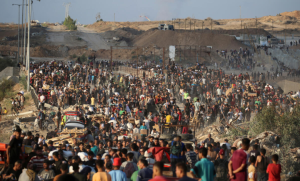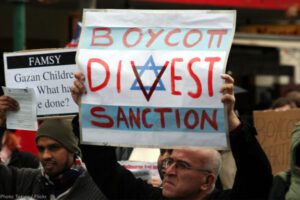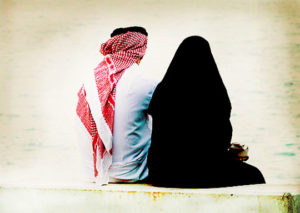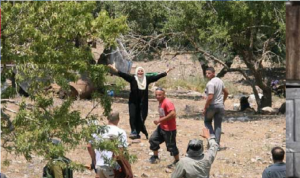This article written by Ebrahim Mousa and published in Muslimvillage.com
The usage of the word Hijab nowadays tends to immediately conjure up imagery on Islamic clothing obligations for women, the jilbab, niqab, abaya, headscarf etc. and the uphill battle many Muslim women face in embellishing themselves Islamically. What, I feel, seems to be far less considered in the public discourse today is the male factor: How males should conduct themselves and the Shariah protocol relating to their dressing.
I was hence relieved to hear some cogent counsel on the subject recently from Mufti Ismail Menk through a Youtube clip that eventually gave rise to a much needed on-air discussion on Cii Radio’s Ulama In Focus show. In the video, Mufti Menk offers a valuable reminder that Hijab is a generic concept that should apply equally to males and females. True, the finer rulings regarding dressing of the genders may differ, but the objectives of Hijab in both instances are the same.
An apt demonstration for this parity is provided in the Qur’aan wherein Allah SWT commands both men and women to lower the gazes in modesty(with men, in fact, being addressed prior to women):
Also Read: Imaam Yakhsyallah: Nurture Love for the Prophet, One Will Be with Whom One Loves
In the name of Allah, the Beneficent, the Merciful. “Tell the believing men to lower their gaze (from looking at forbidden things), and protect their private parts (from illegal sexual acts). That is purer for them. Verily, Allaah is All‑Aware of what they do.
And tell the believing women to lower their gaze (from looking at forbidden things), and protect their private parts (from illegal sexual acts) and not to show off their adornment except only that which is apparent (like both eyes for necessity to see the way, or outer palms of hands or one eye or dress like veil, gloves, headcover, apron), and to draw their veils all over Juyoobihinna (i.e. their bodies, faces, necks and bosoms) and not to reveal their adornment… And all of you beg Allaah to forgive you all, O believers, that you may be successful” [al-Noor 24:30-31]
This dimension of Hijab has always been enshrined in the Shariah, but its highlighting has become more pertinent now in light of the explosion of homosexuality and increase in sexual objectification of men.
As a Wikipedia entry notes, women’s supposed sexual liberation in the West has led to a potential role reversal, whereby many women(and perhaps men too) view men as sex objects,in a manner similar to the ongoing(and much longer prevalent) portrayal of women. Research has suggested that the psychological effects of objectification on men are similar to those of women, leading to, amongst others, a negative body image among men.
Also Read: Thanksgiving: An Islamic Perspective
Instances where men may be viewed as sex objects by women include Islamically abhorrent advertising, music videos, movies and television shows, ‘beefcake’ calendars, women’s magazines, male strip shows, and clothed female nude male (CFNM) events. Also, more women are reportedly purchasing and consuming pornography.
“Today you have skinny jeans,” comments Mufti Menk, “that is absolutely unacceptable – it is equivalent to the mini-skirt of a female..Today you have tight shirts with your buttons open and you want to expose, that is perhaps similar to something else illegal that females are wearing. These items of clothing drive away the Angels of Mercy and Protection Allah SWT has sent to accompany us”.
The power of clothing, according to the Mufti, is one that should never be underestimated. Dressing appropriately or inappropriately is a major determinant in drawing one closer to the opposite gender, either legitimately or otherwise. Hence, Islam, as a comprehensive way of living, sets in place a framework of rules for both males and females that regulates this otherwise perceivedly mundane part of daily living.
For one, says the Mufti, the fabric that makes up the clothing should be considered carefully. This should not be so thin so as to reveal what lies beneath what one is supposedly covering. Islam respects modifications in dress fabric based on the prevailing climate, but still, at no time may this overarching principle of not revealing be contravened.
Also Read: Achieving the Position of Fasting Expert with Kindness of Morality
Equally, the fit on garments should always be loose fitting and not be so tight or hugging so as to reveal the shape and curve of the body.
Then comes the issue of Awrah, or the parts of the body that should be strictly covered at all times. For males, the Shariah stipulates this bare minimum to be from the navel to knees. However, proper decorum entails that all other relevant parts of the male body be clothed as well, barring any legitimate circumstances for it to be otherwise.
It is with this framework in mind that we should give conduct a serious introspection of what is considered socially acceptable for men to dress in today. Even supposedly Islamic garb is not exempt, according to Mufti Menk.
“Sometimes I look at the tight fitting thoubs (kurtas) on the market, and wonder where we are heading,” he says. “Loosen those jeans(and other tight fitting items) up a bit. Some of us boys now have gone as far as showing their undies in public. You and I know that and the whole world knows that. There is no point pretending that it is not there. So much so that they want to show the brand of undies they are wearing. On top of that is a shirt, half of the buttons are open, the hair of the chest is showing..”
Also Read: The Power of Charity in Ramadan
There are also the skin-tight t-shirts, which many brothers use to exhibit their perfectly toned bodies. Here, the role of pride and boastfulness should also be considered as they constitute among the greatest sins in Islam, and attempting to impress others (both males and females) using our physique and attracting attention to ourselves in such a manner certainly falls into this category.
To move closer to the Islamic brand of modesty, the Mufti advises each male to consider how he ‘can do better’.
“There must be this upward movement in terms of earning closeness to Allah SWT throughout our lives. No matter who I am, I can still improve. Even if I am am wearing a thoub/kurta, there is still scope to make the material thicker, or ensure I wear a longer pants beneath etc.”
Furthermore, he suggests a greater attention be expended on internalising the deeper dimensions of Hijab, something the Qur’aan refers to as the ‘garb of piety’.
Also Read: Ramadan Brings the Change
Just like female interaction and behaviour is regulated in Islam, males too need to be cognisant of modesty in their speech, intermingling and social etiquette.
“Your character and your conduct, that is an extension of your clothing,” adds Mufti Menk. “You cannot be dressed however correctly in terms of Islamic garb, but be foul in terms of your words or morality..What then is the point?”
“To be honest with you,” he concludes, “when we do this(adopt correct Hijaab) for the sake of our Maker, we will find so much of social bliss, marital bliss, goodness within the home, and we will automatically become role models for our own children, even without uttering a single word”.
An online author aptly summarises the discussion on male Hijab with a Golden Rule: do unto others as you would have them do unto you. He goes on to quote a Hadith where a man once came to the Prophet(SAW) and told him he wished to commit fornication. As the companions got up to strike him, the Prophet restrained them and then said to the man, “My son, how would you feel if someone wished to do the same thing with your mother or sister or wife or daughter?”
Also Read: Ramadan, the Month of Education
The man replied that naturally he would want to kill the person. The Prophet then said, “If you do not wish for someone to do such an act with your mother or sister or wife or daughter, then why entertain such a thought about someone else’s mother or sister or wife or daughter?!”
So here comes the golden rule in action: the next time you go out in public wearing clothes that reveal your chest and biceps(or other questionable items of clothing) so that the girls can check you out, imagine how you would feel if your own sister or wife was checking out other men who were dressed in a similar provocative manner. The answer should be obvious. (T/P007/P3)
Mi’raj Islamic News Agency (MINA)
Source: http://jamiat.org.za/
Also Read: Come on Do I’tikaf
































 Mina Indonesia
Mina Indonesia Mina Arabic
Mina Arabic